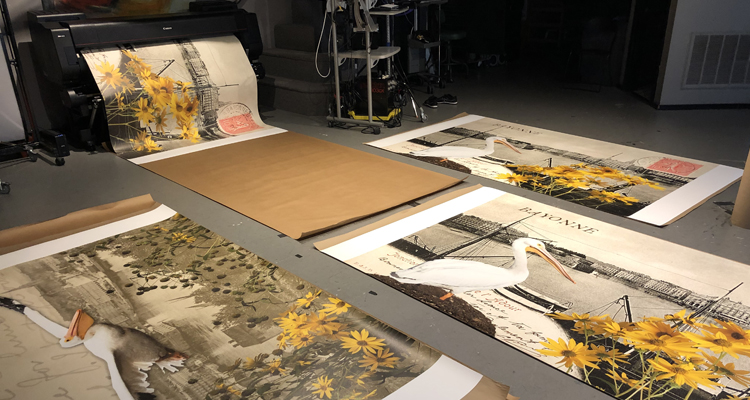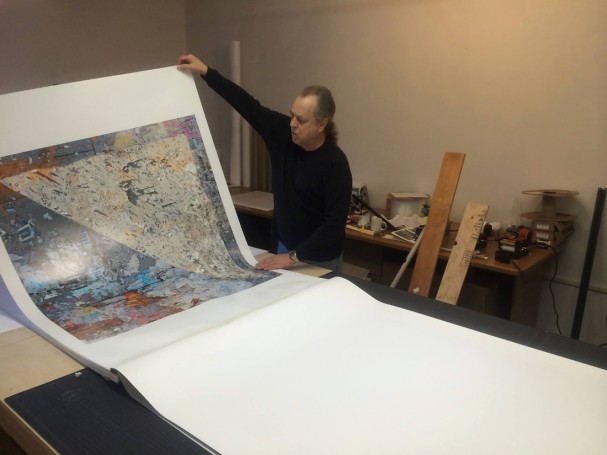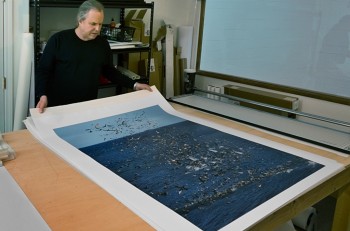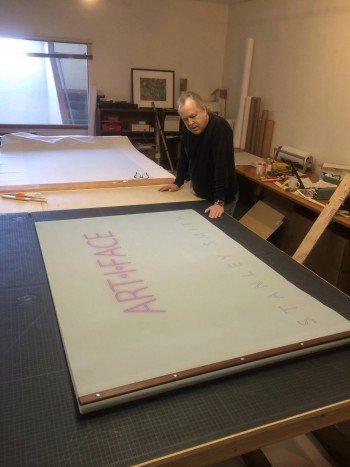Baton Rouge, La., photographer David Humphreys was approached by Mike Wampold, CEO of the Wampold Companies, to produce art for Bayonne at Southshore, a new apartment complex just off the Louisiana State University campus. “He had these French postcards that he wanted to turn into 5-foot by 8-foot murals,” Humphreys says.
It wasn’t just the antique postcards that would serve as the inspiration for the canvas prints. “Veni Harlan, a specialist in marsh species, helped me find the proper flora and fauna of the LSU lakes,” Humphreys says. “Also, Mr. Wampold knows that there are a large number of pelicans that fly in and stay in the LSU lakes, and that’s how the pelican became the symbol for the apartment complex.”
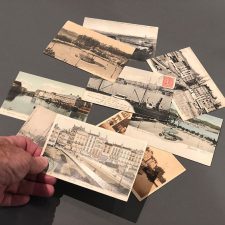 Once he started experimenting with the process, he knew it was going to be an intricate and detailed project. “I used a high-end Phase One camera, mounted a camera stand and shot them in six or eight sections,” he says. “Then I stitched them together in Photoshop to get an accurate 800 Mb file. I didn’t want to turn them into vector files because I wanted to maintain the integrity of the images.”
Once he started experimenting with the process, he knew it was going to be an intricate and detailed project. “I used a high-end Phase One camera, mounted a camera stand and shot them in six or eight sections,” he says. “Then I stitched them together in Photoshop to get an accurate 800 Mb file. I didn’t want to turn them into vector files because I wanted to maintain the integrity of the images.”
Humphreys needed to incorporate the pelicans and other species into the artwork, so he reached out to Gerald Burns, a friend, and former priest-turned-wildlife photographer. “I do a lot of fine art printing for Father Burns,” Humphreys says. “He had some old photos of birds and reptiles that he’d taken over the years, but some were lower pixel ratings. I printed them using LexJet Premium Archival Matte Paper, mounted the prints and, then used the same stitching process I used with the postcards.”
When it came time to print the final art pieces, Humphreys needed to find a printer that would provide a full 60-inch bleed. “After researching all the printers available, the Canon PRO-6000 stood out as being most advanced in technology,” he says. “The printer is incredible. It’s user-friendly and did a beautiful job. Now I’m doing a lot of larger images for other people because of the 60-inch capability.”
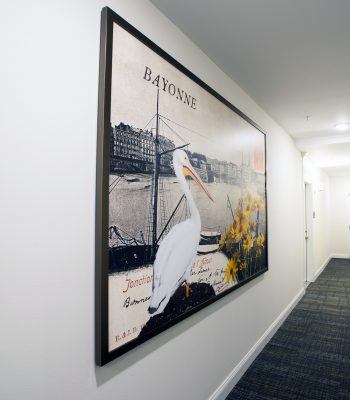 After the murals were printed, Humphreys reached out to some friends to help with finishing and installing. “Vivid Ink mounted the prints to custom boards, then they were delivered to Ann Connelly Fine Art for custom framing. Then Vivid Ink did the installation at the apartments,” he says.
After the murals were printed, Humphreys reached out to some friends to help with finishing and installing. “Vivid Ink mounted the prints to custom boards, then they were delivered to Ann Connelly Fine Art for custom framing. Then Vivid Ink did the installation at the apartments,” he says.
With 42 years of photography experience, Humphreys says he was inspired to start printing by an unlikely source: Graham Nash of Crosby, Stills, and Nash. “Graham’s father was a photographer and he got into fine art printing pre-inkjet. Now he owns Nash Editions in California, one of the pre-eminent fine art printing companies in the country,” he says. “He inspired me to print for myself. Ann [Connelly] loved what I was doing, so I branched out and started printing for her and other people.”
Whether printing his own work or helping others create museum-worthy pieces, David Humphreys knows the benefits of partnering with the right people and using the right equipment to turn an idea into reality.
To learn more about creative applications or to find out which printer is right for you, contact a LexJet specialist at 800-453-9538 or visit LexJet.com.

